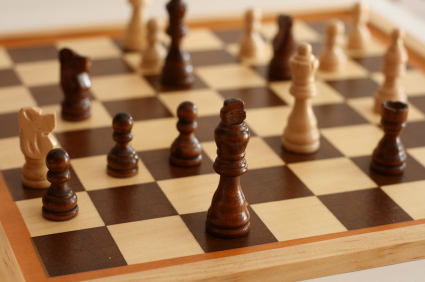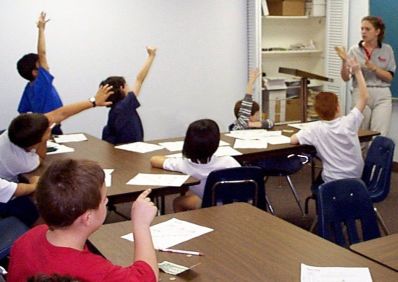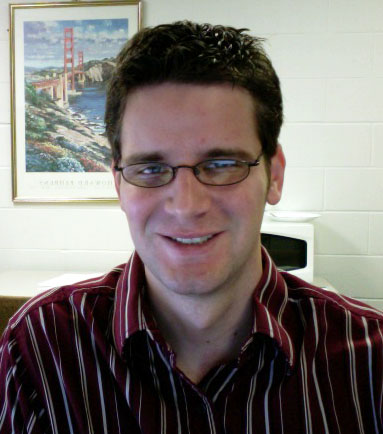
IMACS students in a math enrichment class.
Former IMACS instructor, Brandi Parsell, offers advice on how to address the ultimate question in a way that stimulates logical reasoning and critical thinking skills.
It can be endearing, or at times downright frustrating – that eternal question, “why?”. When bright children discover that single word, they seem to grab onto it and won’t let go. Sometimes the answers are simple, and sometimes we find ourselves at a complete loss for words.
This innocent question, however, is a signal to parents that a child is ready to be challenged to think logically. The creativity is there – we can see it in their everyday play. It is how we encourage that creativity and shape it into critical thought that will form a solid basis for a child’s learning ability.
Critical thinking is one of the hardest subjects to teach older students; any schoolteacher will tell you so. But if you begin to give your children the necessary tools when they are as young as three or four years old, they can develop these skills more easily. When the question of “why” is put once again on the table, the best policy is to ask, don’t tell. Challenge your children; ask what they think the reason might be. Chances are you will be pleasantly surprised.
Often parents believe that when their child reaches school age, he or she will at last find satisfaction for that curiosity. Talented students, though, may become bored with traditional school curriculum. When such a student is not challenged to exceed our expectations, this frustration often takes the form of careless errors and lack of effort. If children begin to develop these kinds of bad habits, too often they give up quickly when faced with a truly challenging problem. It is important that bright students are encouraged to go beyond what is merely “expected” of them.
“Talented students owe it to themselves to stretch their minds as far as they can,” said Burt Kaufman, co-founder of IMACS. Burt spoke from experience. For over 40 years he worked closely with bright pre-college students and developed challenging mathematics curriculum materials to stimulate them to become true students – disciplined logical thinkers with an insatiable thirst for knowledge and understanding.
Parents are a child’s first teachers, and the best teachers don’t give away the answers. Turn your child into a detective, and yourself into their greatest source for clues.
An IMACS foundation in logical thinking sets students on a path to successful learning. Take our free aptitude test to begin your IMACS journey.
IMACS chats with Thomas Rutkowski, Assistant Professor in the Department of Anatomy and Cell Biology at the University of Iowa Carver College of Medicine. Prof. Rutkowski received his Ph.D. in cell biology from UC San Francisco and his B.S. in biotechnology with a minor in chemistry from the University of Delaware. He completed his post-doctoral fellowship at the Howard Hughes Medical Institute/University of Michigan. Prof. Rutkowski is also an alumnus of Project MEGSSS of St. Louis, Missouri, the sister program to Project MEGSSS of Broward County, Florida. The latter became IMACS in 1993. All three programs share a common curriculum that teaches students how to think critically using logic and reasoning.
Tell us what you’re currently working on in the lab.
My lab studies how cells respond to perturbation (“stress”) in the endoplasmic reticulum (ER). Sensing ER stress and responding appropriately is essential for the development and normal function of many different cell types, and dysregulation of the response contributes to a number of human diseases. We have two main interests. The first is understanding how ER stress contributes to fatty liver disease (FLD), which is the most common liver disease in the western world. FLD is latent and reversible in most people, but can progress to hepatitis, cirrhosis, or liver cancer, which are all irreversible. We have evidence that the ER stress response fundamentally alters how fat is metabolized in the liver, and that these alterations might contribute to FLD.
Our other interest is in understanding how the ER stress response senses the nature, strength, and persistence of the stresses that activate it, and then alters cell physiology to generate the appropriate response. For example, the ER stress response is activated both in immune cells when they are stimulated to produce antibodies, and in the liver after a meal—two very obviously different stimuli. What makes the ER stress response in the liver cell different from the response in the immune cell? This project actually has a significant mathematical component, and we are collaborating with a professor in the department of mathematics to build a mathematical model of the ER stress response. We will use the model to predict how the cell will respond to stresses of different types, thereby (hopefully) understanding how the signaling networks of the response are wired.
What are some of the potential applications of your research?
The simple answer to this question is that if we understand how cellular stress responses alter fat metabolism in the liver, then we will better understand how conditions like obesity, alcoholism, and hepatitis C infection lead to liver dysfunction and liver cancer, and ideally be able to prevent these problems. With the number of obese adults in the U.S. rapidly approaching one in three (not to mention the comparatively smaller but still significant numbers of alcoholics and hepatitis C patients), understanding and treating fatty liver disease and its downstream consequences is a huge challenge.
Of course, the larger reality is that basic research often comes with substantial but unforeseen rewards. By understanding basic cell biology we ultimately gain insight into many diseases, as well as normal human biology. A classic example I like to give is the MutS gene—which was first identified by a group studying DNA repair in bacteria, which would seem to most to be a highly esoteric topic with little practical value. However, the human equivalent of this gene later turned out to be involved in hereditary colon cancer. The rewards that come from simply asking how cells work, while perhaps harder to pin down, are probably far greater in the long run than anyone can imagine.
How did your experience in Project MEGSSS studying what is also the IMACS curriculum influence your path from high school to your present career?
I think in two ways, one somewhat abstract and the other fairly concrete. I think the abstract influence was in helping me to realize that my intellectual potential was far greater than I'd appreciated. In fact, I think most people never have a moment where they realize how limitless their own potential is, and that is a shame. When you go from being bored to death by long division in a traditional elementary school curriculum to learning college-level logic—and realizing that you are in fact learning it—it suddenly seems more reasonable to think big: big ideas and big aspirations. In this kind of curriculum, you are also exposed to other students who have already hit upon this realization. Then, as now, I think it stimulates my own thinking to be exposed to those who think about things on a wholly different plane, with incredible depth and creativity. Being a scientist, it is clear that big ideas are what move progress forward. MEGSSS was really my first exposure to the world of big ideas and creative thinkers that has (hopefully) shaped my initial inclinations toward science and how I've approached it since I've become a practicing scientist.
The other more concrete influence is in how we are using mathematics to inform our understanding of biology. In our quest to understand how cellular stress pathways work, one of the approaches we are taking is to develop a mathematical model of the stress pathway. By that I mean that each of the steps in the process is replaced by a differential equation that (ideally) accurately describes it. The point of this process is to develop a dynamic mathematical representation of the response that allows us to do computational experiments that we cannot do in real life, and so learn more about how the stress response works as a complex unit. Many biologists shy away from this kind of investigation, because they don't intuitively appreciate how broadly applicable math is to problems in other areas and they aren't comfortable with the language. Admittedly, we are collaborating with a mathematician to help us with our modeling, but I think that programs like MEGSSS and IMACS makes students much more aware of how diverse a field mathematics is, and also makes them so much more comfortable with the language, and willing to apply it elsewhere.
You’re a parent with a mathematically precocious child. What are some of the activities you engage in as a family to help foster that talent?
We ultimately try to expose our children to new ideas (mathematical and otherwise) and challenge them to reason through problems they don't understand without pushing so hard as to turn them off. As my mother used to say, ”Use what you know to figure out what you don't know.&rdquoMath has to be fun; learning has to be fun. Opportunities present themselves if you just look around. For example, we used the weather changes to illustrate the concept of rate of change. Here in Iowa we are blessed, or perhaps cursed, with four very distinct seasons. In the summer and winter months, the temperature doesn't change much over time, but it changes quite rapidly from early fall to late fall, or early spring to late spring. Notice how the temperature might be warmest in the summer and coldest in the winter, but it changes the most in the spring and fall? Differential calculus at work, and hopefully introduced in a low-key way. Our primary goal as parents is to do whatever we can to keep them interested in math (and learning in general); if we can successfully do that, I hope they'll naturally take to whatever curricula they are exposed to. Of course now that our oldest is entering third grade, and getting to the point where boredom with his regular math curriculum is starting to be a problem, we have had to look more actively for ways to foster his interest. I vividly remembered my exposure to logic and number theory in my first summer with MEGSSS (after fifth grade) and have since ordered those beginning books for him.
There is a lot of talk about the challenges the US faces in math and science education. From your point of view as a professor and a parent, what actions need to be taken to help US students become competitive again in the new global environment?
The U.S. is far and away the world leader in scientific research, which makes the mathematical and scientific illiteracy of the general population all the more discordant and alarming. We absolutely cannot sustain our technological edge in this environment—partly because we will no longer continue to produce talented scientists and mathematicians; and partly because a population that does not understand math and science will not support them intellectually or financially. A majority of Americans do not accept the idea of evolution—that all life arose by descent with modification from a common ancestor—despite the fact that it is the central organizing principle in biology, paleontology, and, importantly, medicine, and is one of the best supported scientific theories ever devised. A large minority of Americans do not accept that human activity is warming the planet, despite this too being an extremely well-supported theory and having reflected the consensus scientific view for nearly 20 years.
Where does this illiteracy come from? I think it ultimately arises from the fact that science (and math) represent fundamentally unique ways of thinking about the world that are simply not well-taught in schools. Science is not knowing the difference between igneous rock, sedimentary rock, and metamorphic rock. It is not repeating some ”experiment&rdquothat's been done thousands of times over by millions of students with a prescribed result. Science is inquiry. It is observing the world, asking a question, forming a hypothesis, testing the hypothesis, and discarding the hypothesis if the test falsifies it, or moving forward with it if the test supports it. Every student learns this as ”the scientific method,&rdquobut how many get to put it into practice, to address a question to which the answer is unknown? How many science teachers make this kind of investigation the centerpiece of their curriculum, versus simply presenting a series of facts that must be memorized and ”labs&rdquothat must be suffered? Knowing that, as a scientist I am learning the answers to questions that have never been answered before, however big or small, is one of the true excitements of my vocation.
The same applies to math as well; math is not a worksheet full of arithmetic problems. It is a language that can be applied to real world problems, and requires its own way of thinking. There are teachers who approach science and math in this way, but I am convinced they are few and far between, and many others who want to probably feel they cannot, lest their students perform poorly on standardized tests. That people are not generally trained to think this way is evident from our national discourses. Debates are driven by ideology, with every viewpoint given equal weight. Arguments are made by assertion and evidence is cherry picked to support a preformed viewpoint. This is totally antithetical to scientific thinking, where the evidence drives the viewpoint and the viewpoint is subject to change based on the weight of that evidence. If science and math education in this country were geared toward teaching those ways of thinking, rather than toward the accumulation of information needed to pass a standardized test, I think not only would the population be more scientifically literate, and not only would we maintain our scientific edge, but we would also have much better informed and more productive dialogues on the issues facing society.
IMACS believes in keeping high achievers challenged. If you’re ready for the IMACS challenge, take our free aptitude test.

IMACS’ Senior Curriculum Developer, Edward Martin, recalls a lesson learned from his own father about the virtues of honing one’s mental agility with games, an exercise that is particularly effective for developing abstract thinking skills.
When he was in a reflective mood, my dad occasionally revealed interesting episodes from life as a younger man. He recalled, for example, for several years riding the train to work in company with two fellows who spent the hour-long journey either with eyes closed or staring into space while sporadically uttering cryptic phrases such as “D five to B six.” Puzzled by this behavior, after a few weeks my dad asked them what they were doing. It turns out that they were playing chess…without a board! The amazing thing was that they were usually able to agree upon the outcomes of these wholly-imagined contests.
Few of us are blessed with such powers of concentration. However, the ability to concentrate is something that can be trained. As with many such faculties, it improves with use. Even 8- or 9-year-old youngsters are capable of feats approaching that of my dad’s glassy-eyed chess-playing companions. Next time your energetic third or fourth grader is acting up in the car, challenge him or her to a game of tic-tac-toe…without the board. Brush aside any incredulity that such a thing is possible. Just jump in and say, “I’ll go first. I’ll be X and I’ll put my first X in the top left corner.” Before you know it, your recalcitrant fellow traveler will be caught up by the spirit of competition and will be totally focused upon the goal of putting you in your place for having the temerity to issue such a challenge.
In this quick and simple little exercise, you achieve: honing concentration skills, thinking about and communicating grid-based information, and peace and quiet. It’s a win-win situation!
What are some of the mind-stretching games that you play or played?
Have you imagined yourself taking an IMACS course? Sign up for our free aptitude test. Play along with our weekly IMACS logic puzzles on Facebook.

Guest blogger and former student, Natasha Chen, shares her experience on parenting a mathematically precocious child.
First, this is not a blog about how to tell if you have a mathematically talented child. There are many great resources out there by people more educated on and experienced in that topic. (I’ve found the Hoagies’ Gifted Education Page, and the book “Developing Math Talent” by Assouline and Lupkowski-Shoplik very helpful.) If you think you have a mathematically gifted preschooler, then you might have discovered that it’s hard to find a program for gifted children that caters to this age group. These are just a few tips I’ve found myself sharing with other moms of three- to five-year olds that you might also find useful.
Building Sets
LEGOs, Tinker Toys, Lincoln Logs, K’nex, Magna-Tiles, tangrams, blocks of all shapes and sizes. All of these and similar toys are great for stimulating different areas of mathematical thinking at different stages of childhood. First, you can play all kinds of sorting games. Group the red pieces over here. Group the square pieces over there. Oh no, what do we do with the red squares? We can put them in the middle! All the rest go on the outside. Voila, introduction to set theory. Then there is visual-spatial reasoning. Have you ever observed a preschooler building a structure? She’s often down on her hands and knees looking at it from this way and that way, trying to figure out where to put the next piece. Seems like a pretty good way to encourage the ability to envision objects from different angles. And a message to parents of gifted and talented girls from a former girl: We love, Love, LOVE these kinds of toys!
Mathematical Logic
This can sound so daunting at first. “How do you expect me to teach mathematical logic to a four-year old?” The answer is that you probably already do it every day without realizing it. Does this sound familiar:
Dad: “Your mom and I don’t play with the crayons, so either you or your brother drew on the wall.” Child: “Not me!” Dad: “So who was it then?” Child: “He did it!” Wait, wasn’t that just [(P or Q) and (not P)] implies Q?
Or how about this one:
Mom: “If you want me to take you to the park, you need to sit down and finish your lunch.” Child is still running around. Mom: “Okay, I guess we’re not going to the park.” So now we have [(P implies Q) and (not Q)] implies (not P).
Or worse yet:
Dad: “We’re cutting out junk food in our family. We all need to eat healthier.” Child spies Dad sneaking some barbecue potato chips. Child: “Hey, you said we couldn’t eat that!” Dad: “Uh, I’m not really your dad, so I’m not in the family?” Busted!
See, logic is really the underpinnings of childhood discipline. Hmm, let’s leave that one for a different blog.
Fractions
I’m sure we’ve all said something like this to our kids: “You can have half the cookie now and save half for later.” And then you wordlessly break the cookie in half in view of your child. If you cook or bake, let your kids observe and narrate as you go: “We need a quarter teaspoon of salt. Would you please pass me the quarter-teaspoon?” “Which one is it?” “The one that says one and then a slanted line and then a four.” “Why does it say that? Why did you call it a quarter? That’s a coin.” There’s nothing like parenting gifted children to keep you on your toes! If your child’s fine motor skills are pretty good, then get a plastic knife and let them cut up soft ingredients. Say, “Cut it in half, and then cut the halves in half so you get quarters.” It doesn’t matter if they cut accurately, just that they comprehend that we get fractions from dividing up a whole. Keep a set of measuring cups in the bath toy rotation, preferably ones with the amounts (e.g., 1/2) written in big numerals. If you have room, keep several sets so that you can take one cup of water and pour it into three different 1/3 cups. “Look at that! The first cup is empty now and the other three cups are all full.”
Lose The Lecture
As you have similar kinds of enriched dialogue with your little Fermats, keep in mind that at this age there is no need to make a big production out of any of these lessons. Little ones generally don’t have the patience for a mini-lecture, nor do they seem to really embrace new information delivered that way. Mathematically gifted and talented youngsters will welcome these experiences as part of rhythm of their lives. It just takes a little more conscious effort on our part as parents to disguise the learning as play.
If you have any more tips, please leave a comment. I could use all the help I can get!
Start the ball rolling with IMACS by taking our free aptitude test. Follow IMACS on Facebook.
« Newer Posts









